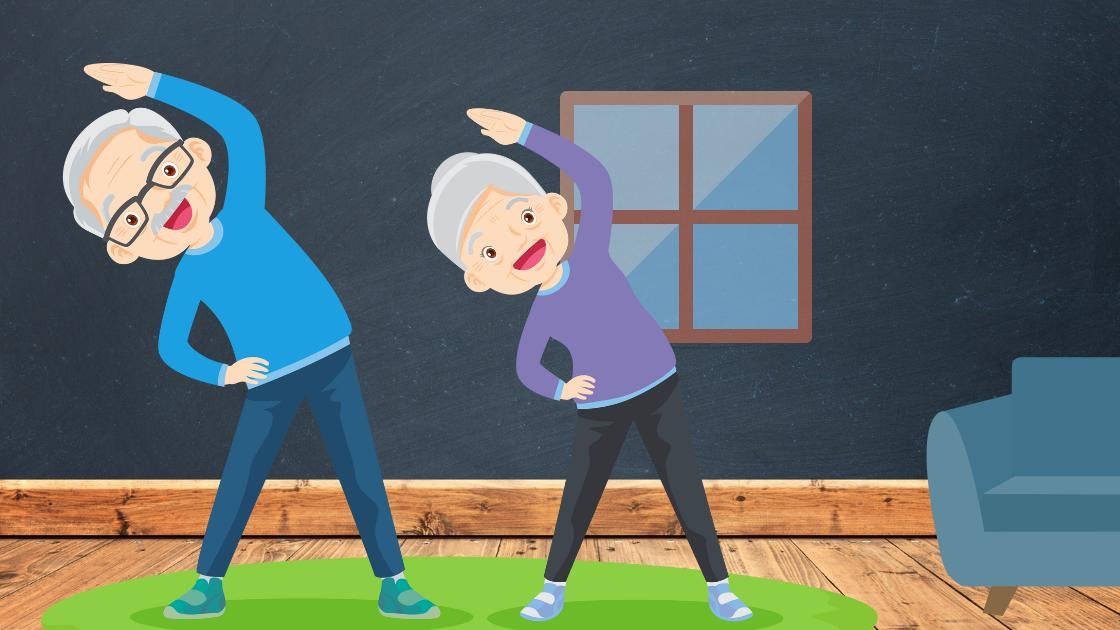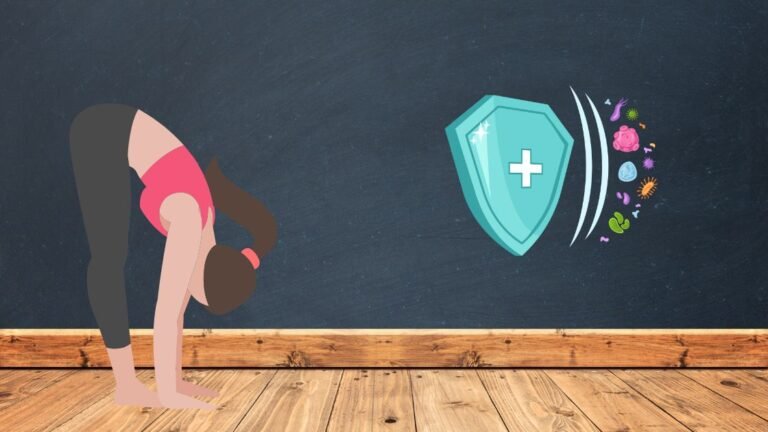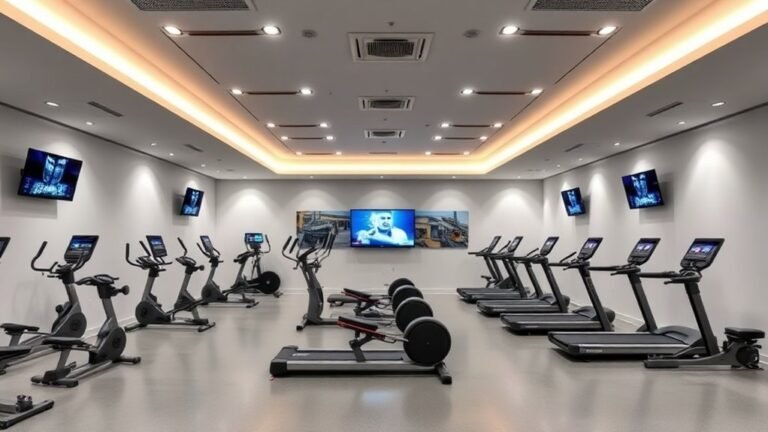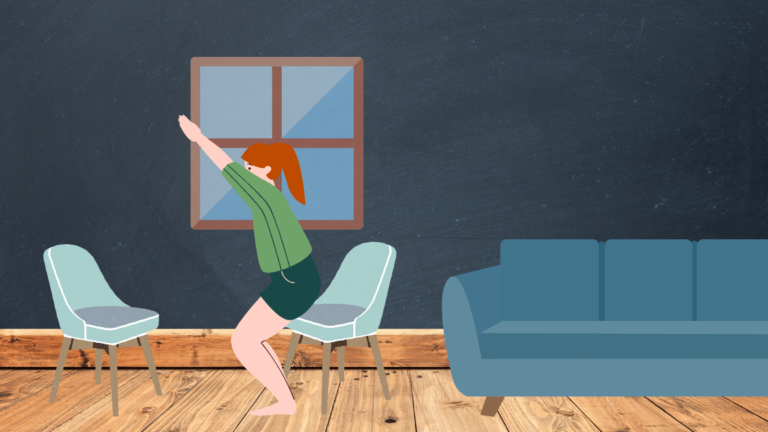Home Workouts for Seniors to Maintain a Vibrant Lifestyle
As a fitness trainer, I want to give seniors the tools they need to live an active and healthy life. In this article, we’ll talk about how important it is to stay active as we get older and how home workouts designed for seniors can be a great way to do this.
Seniors can stay in shape, improve their mobility, and improve their overall health by working out at home. Whether you are a senior looking to start a new exercise routine or a caregiver helping a loved one, these home workouts for seniors will give you useful information and fun exercises to try.
Stay Active and Healthy: Home Workouts for Seniors
As we get older, it’s even more important to stay active and healthy. Regular physical activity can help seniors improve their heart health, maintain their muscle mass, control their weight, and become more flexible. It is also very important for improving mood, lowering stress, and making your brain work better.
Benefits of Home Workouts for Seniors
Seniors can get a lot out of home workouts, which makes it easier for them to stick to an exercise routine. Some of the most important benefits are:
- Convenience: Seniors can work out in the comfort of their own homes, so they don’t have to travel and can feel at home.
- Flexibility: Home workouts can be done at any time, so seniors can fit their workouts into their busy days.
- Privacy: Working out at home gives you a private space, which can be helpful for people who don’t like to work out in public.
- Safety: Seniors are less likely to get hurt when they exercise because they have more control over their environment and pace.
Essential Warm-Up Exercises
Warm-up exercises are important to do before the main workout to get the body ready for physical activity. Warm-ups get the blood flowing, loosen up the muscles, and lower the chance of getting hurt. Here are some good ways for seniors to warm up:
Neck Rotations: Gently rotate your neck in a circular motion, first clockwise and then counterclockwise, to loosen neck muscles.
Shoulder Rolls: Roll your shoulders backward and forward in a circular motion to release tension in the shoulders and upper back.
Arm Swings: Stand with your feet shoulder-width apart and swing your arms forward and backward, gradually increasing the range of motion.
Hip Circles: Hold onto a sturdy chair for support and make circles with your hips in one direction and then the other.
Ankle Rotations: Sit on a chair and lift one foot off the ground. Rotate your ankle clockwise and counterclockwise to improve ankle flexibility.
Home Workouts for Seniors
Now, let’s look at some home workouts for seniors that are made just for them. Make sure to talk to your doctor before starting any kind of exercise program, especially if you already have a health problem.
Chair Exercises
Chair exercises are perfect for seniors with limited mobility or those who prefer seated workouts. These exercises provide a gentle yet effective way to engage various muscle groups.
Seated Marching: Sit upright and lift one knee at a time, as if you are marching in place. Repeat for 1-2 minutes.
Arm Circles: Sit on the edge of a chair with your feet flat on the floor. Extend your arms to the sides and make small circles with your hands. Switch directions after 30 seconds.
Leg Extensions: Sit tall and extend one leg straight out in front of you. Hold for a few seconds, then lower it down. Alternate between legs for 10–12 reps per leg.
Seated Twists: Sit with your feet flat on the floor and hands on your hips. Twist your upper body to the right, then to the left, to stretch the core muscles.
Balance and Stability Exercises
Maintaining balance and stability is crucial for seniors to prevent falls and injuries. These exercises help improve proprioception and core strength.
Single Leg Stand: Stand behind a chair and hold onto it for support. Lift one foot off the ground and hold for 10–15 seconds, then switch to the other leg.
Heel-to-Toe Walk: Place one foot directly in front of the other as if walking on a tightrope. Take a few steps forward and then backward.
Side Leg Raises: Stand next to a counter or wall for support. Lift one leg out to the side, keeping it straight, and then lower it back down. Repeat on the other side.
Strength Training with Resistance Bands
With resistance bands, you can build muscle strength without putting too much pressure on your joints. They come in different levels of difficulty, so seniors with different levels of fitness can use them.
Bicep Curls: Stand with your feet shoulder-width apart and step on the resistance band. Hold the ends of the band and curl your hands toward your shoulders.
Leg Press: Sit on a chair and wrap the resistance band around your feet. Push your feet forward to engage the leg muscles.
Shoulder Press: Sit tall with the resistance band under your feet. Hold the ends at shoulder height and press upwards, extending your arms.
Flexibility and Stretching
Flexibility exercises help keep joints flexible and loosen up stiff muscles, which helps improve range of motion.
Neck Stretch: Gently tilt your head to the right, feeling the stretch on the left side of your neck. Hold for 15–20 seconds and repeat on the other side.
Triceps Stretch: Raise one arm overhead, bend your elbow, and place your palm on the upper back. Use your other hand to gently push on the elbow to deepen the stretch.
Quad Stretch: Hold onto a chair for support and bend one knee to bring your heel toward your buttocks. Hold for a few seconds and switch to the other leg.
FAQs
1. Are home workouts suitable for all seniors?
Absolutely! Home workouts can be changed to fit people of different fitness levels and with limited mobility. Before you start any exercise program, you should always start with easy exercises and talk to your doctor.
2. Can I use household items for resistance in strength training?
Yes, you can! For strength training exercises, you can use things like water bottles or cans of food as makeshift weights.
3. How often should seniors exercise at home?
Seniors should try to get at least 150 minutes of moderate-intensity aerobic activity per week, plus two days of muscle-strengthening exercises.
4. What should I do if I experience pain during exercise?
If you feel pain or discomfort while working out, stop right away and take a break. If the pain doesn’t go away, see your doctor to make sure there’s nothing else wrong.
5. Can I combine home workouts with outdoor activities?
Absolutely! Mixing workouts you do at home with things you do outside, like walking or gardening, can keep your routine interesting and fresh.
6. Are online workout videos suitable for seniors?
Yes, there are many workout videos online made just for older people. Look for instructors who are known to be safe and effective.
Conclusion
In conclusion, if seniors want to live a full life, they need to stay active and healthy. Home workouts are a safe and easy way for seniors to stay fit and take care of their overall health.
From chair exercises to strength training with resistance bands to flexibility routines, there are a lot of options for people of different fitness levels and tastes.
Before you start a new exercise program, remember to start slowly, listen to your body, and talk to your doctor. Seniors can improve their quality of life and enjoy their golden years to the fullest if they work out at home regularly and with dedication.
So, let’s put on our sneakers, smile, and start doing home workouts for seniors to stay active and healthy!








